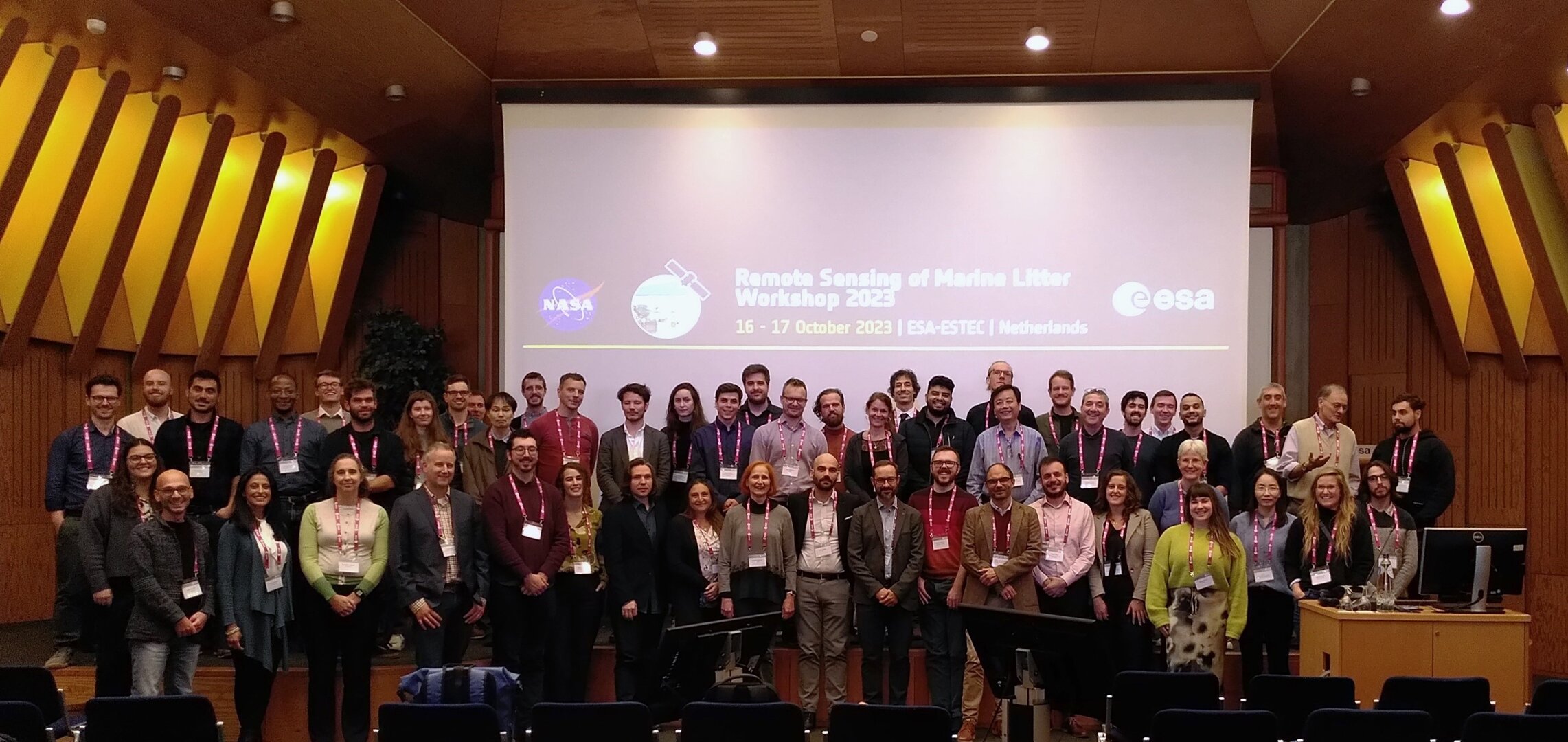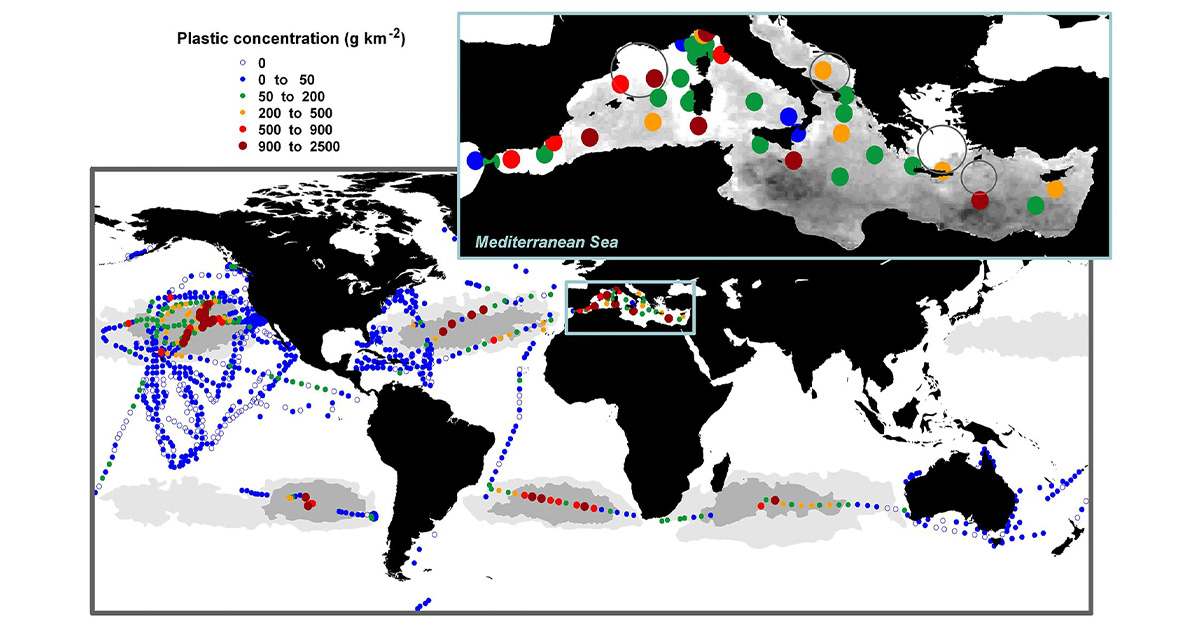Every year, millions of tons of solid waste are dumped into the ocean. Marine litter is one of the most pressing environmental problems, with detrimental effects to ecosystems and concerns for human health.
The Discovery Element of the ESA’s Basic Activities funded 25 innovative projects to detect and track seaborne plastic litter using satellites.
Over the last 70 years, plastic production has grown exponentially. Every year, around ten million tons of plastic are thrown in the ocean, the equivalent to a fresh truckload of plastic dumped every minute. Plastic litter is most noticeable along coastlines, but it is also found in the open ocean and even frozen in polar ices, as it travels across large distances. Monitoring marine litter is essential for managing this crisis, and remote sensing from space can help to better inspect the surface of our planet.
ESA is paving the way for better remote sensing
ESA funded 25 innovative projects to improve detection of plastic marine litter from space, through the Discovery Campaign 'Remote Sensing of Plastic Marine Litter', launched on the ESA’s Open Space Innovation Platform (OSIP).
Working together to find new solutions
Last month ESA and NASA co-organized the workshop “Remote Sensing of Marine Litter 2023” with the theme “Today’s Possibilities, Tomorrow’s Innovation: State of the art, challenges and future directions”. On October 16-17, around sixty researchers from eleven countries gathered at ESA ESTEC in Noordwijk, the Netherlands.
“During two intensive days, participants exchanged and discussed research results, covering different remote sensing technologies applied across different aquatic environments, from seas and oceans to some of the most polluted rivers in the world,” explains Paolo Corradi, ESA systems engineer and one of the main organizers of the event together with Leopold Summerer, Head of the Advanced Concepts and Studies Office at ESA and Laura Lorenzoni, Program Scientist in the NASA Ocean Biology and Biogeochemistry Program.
 (Image credit: ESA)
(Image credit: ESA)
“The workshop revealed the great motivation of the participants to continue working on this exciting topic and pinpointed some of the more promising areas of application of remote sensing to best inform decision-making and solutions to the problem of litter pollution,” adds Paolo.
Perspectives on remote sensing
The workshop brought together several participants from the ESA’s Discovery Campaign on Remote Sensing of Plastic Marine Litter, and was a good opportunity for presenting the results of some the most successful projects. Here is what some of the project managers have to say about how remote sensing can help keeping oceans clean.
Talking about detecting litter, Victor Martinez Vicente, bio-optical oceanographer at Plymouth Marine Laboratory, UK and FRONTAL project manager, says: “We are exploiting current observations to better understand where floating marine litter could be accumulating in the ocean, that is, the areas at risk. Because the ocean is very big, mapping areas at risk of accumulation is important to help us focus on smaller areas that then can be targeted with specific sensors to provide a global picture of floating litter”.
“Traditional techniques, like networks of in situ observations, cannot really cover the entire area of the ocean at the spatial and temporal scales needed; thus we still miss the big picture of what is happening in terms of plastic pollution on a larger scale. So, for us, it is very relevant to have new tools that can cover these observational gaps,” adds Manuel Arias, Earth Observation scientist at the Institut de Ciències del Mar - CSIC, Spain and Project Manager of the project WASP with Argans Ltd.
“Using remote sensing technologies, especially different satellites, we have been exploring how best to monitor marine litter accumulations, which are generally a mixture of natural and human made materials with a large portion being plastic,” explains Shungu Garaba, research scientist at the University of Oldenburg, Germany and principal investigator for OP3.
“For the future, we first need detection of the accumulations of litter in and along the world’s rivers and coasts on their way to the ocean. Then, we need specific sensors to observe these accumulations with higher spatial and spectral resolution to discriminate marine litter, in particular plastics, from other signals, preferably in combination with a sensor that can provide information about the distribution of litter in the water column,” adds Marieke Eleveld, researcher at Deltares, the Netherlands and Plastic Monitor project lead.
Valentina Raimondi, researcher at the Institute of Applied Physics of the National Research Council of Italy and BLUE project lead highlights the need for better measurements: “The expected amount of plastic supposed to enter the ocean is definitely higher than what we can estimate with observations on the surface of the ocean. A significant fraction might float in the first few meters under the water surface”. Integrating different remote sensing technologies, including LIDAR that uses a LASER beam to penetrate into the water, with new data processing approaches such as artificial intelligence will help detect submerged plastic and classify plastic among other types of marine debris.
“We have identified some important aspects of remote sensing marine litter in moving forward, such as defining the most realistic targets for detection and data processing strategies, enhancing the generation of suitable open access databases, promoting the discussion for a dedicated satellite mission, and increasing international cooperation,” concludes Paolo.



